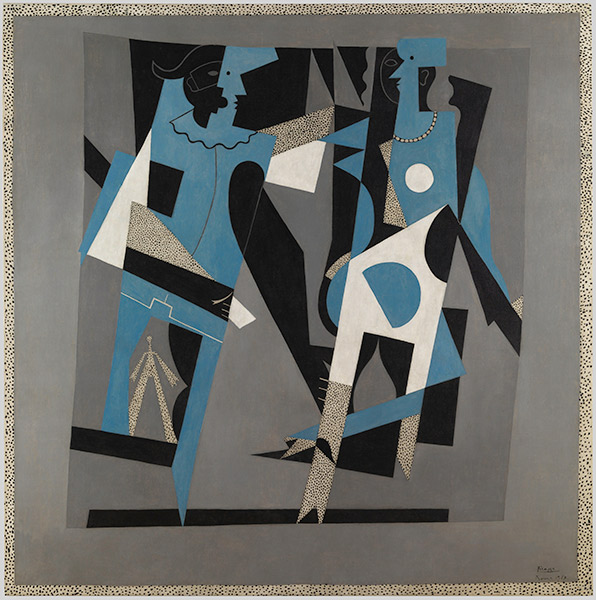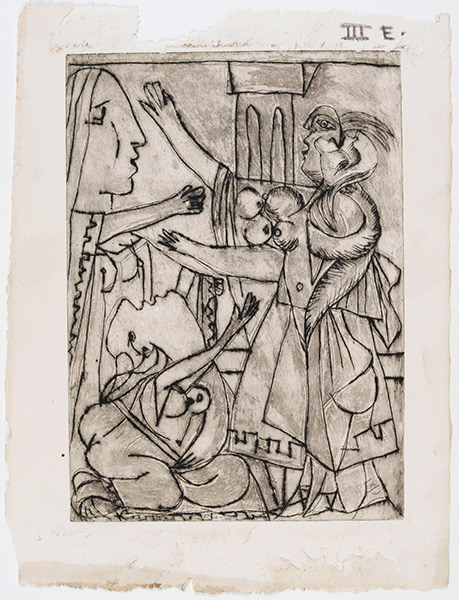The hidden war in Painting
Although Picasso kept his distance from the unfolding of the war from 1914 onwards, he did capture the violence and the atrocities committed against civilians, which he addressed again during the Spanish Civil War. The Cubist revolution—associated with the interest Daniel-Henry Kahnweiler, a German whose property was seized, showed in the movement—was stigmatized by censorship and propaganda campaigns. From the Argonne front, Fernand Léger highlighted this fact with grim irony: "Nothing could be more Cubist than a war such as this one, which neatly chops a man into several pieces and sends him to the four corners of the world."[1] Although Picasso did not directly depict the war that was so fully described by his friends and relations, it did crop up in an unexpected way. Over the months, the figure of the Harlequin, already present in his Rose period, made a new appearance. On February 7, 1915, he advised Apollinaire to paint the artillery around him as his own Harlequins, "in bright colors, bits of red yellow green blue white."[2]
However, Picasso avoided militant commitments in the interwar period. The only social concern mentioned by historians is that during the winter of 1933-1934 Picasso produced engravings to illustrate a new translation of the Greek comedy Lysistrata by Aristophanes, in which women go on a sex strike to stop the war between Sparta and Athens. Eluard's urging for the artist to break his silence at the beginning of the Spanish Civil war was unsuccessful. This could have changed when, on September 20, 1936, the President of the Spanish Republic Manuel Azaña appointed him Honorary Director of the Prado. If we are to believe Aragon, his appointment to the museum—to which Picasso never returned—came as a surprise to the artist: "I remember his astonishment when I gave him the news. ‘Is that really true?'"[3]
[1] Letter from Fernand Léger to Jeanne Lohy, March 28, 1915.
[2] Quoted in the catalogue Picasso et la guerre, Isabelle Limousin, “Picasso et la première guerre mondiale : l’invention du camouflage arlequin,” Musée de l’Armée/Gallimard, 2019, p. 71.
[3] Louis Aragon, “Le bleu de Madrid,” Regards, no. 264, February 2, 1939.






 Summary
Summary